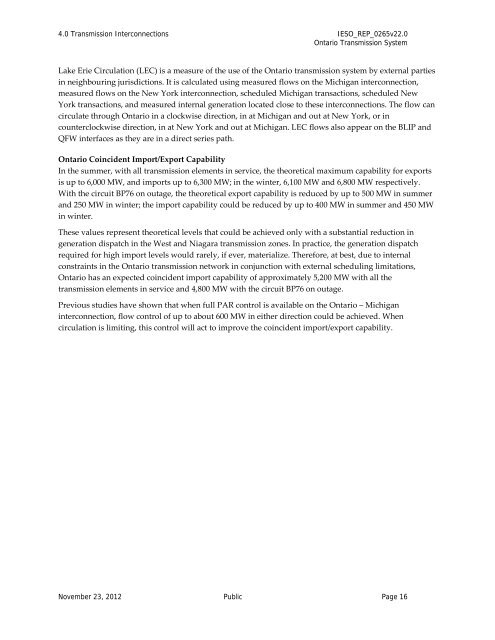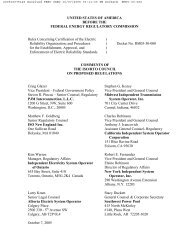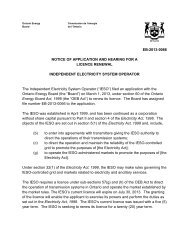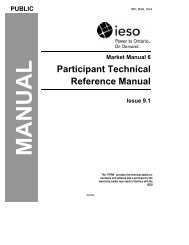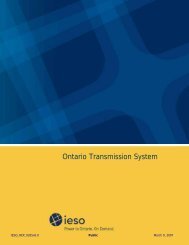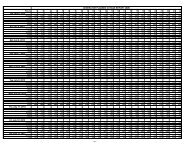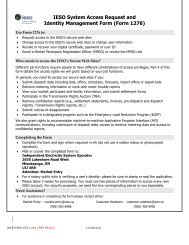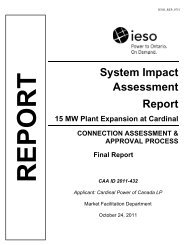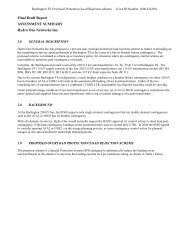Ontario Transmission System - November 2012 - IESO
Ontario Transmission System - November 2012 - IESO
Ontario Transmission System - November 2012 - IESO
You also want an ePaper? Increase the reach of your titles
YUMPU automatically turns print PDFs into web optimized ePapers that Google loves.
4.0 <strong>Transmission</strong> Interconnections <strong>IESO</strong>_REP_0265v22.0<br />
<strong>Ontario</strong> <strong>Transmission</strong> <strong>System</strong><br />
Lake Erie Circulation (LEC) is a measure of the use of the <strong>Ontario</strong> transmission system by external parties<br />
in neighbouring jurisdictions. It is calculated using measured flows on the Michigan interconnection,<br />
measured flows on the New York interconnection, scheduled Michigan transactions, scheduled New<br />
York transactions, and measured internal generation located close to these interconnections. The flow can<br />
circulate through <strong>Ontario</strong> in a clockwise direction, in at Michigan and out at New York, or in<br />
counterclockwise direction, in at New York and out at Michigan. LEC flows also appear on the BLIP and<br />
QFW interfaces as they are in a direct series path.<br />
<strong>Ontario</strong> Coincident Import/Export Capability<br />
In the summer, with all transmission elements in service, the theoretical maximum capability for exports<br />
is up to 6,000 MW, and imports up to 6,300 MW; in the winter, 6,100 MW and 6,800 MW respectively.<br />
With the circuit BP76 on outage, the theoretical export capability is reduced by up to 500 MW in summer<br />
and 250 MW in winter; the import capability could be reduced by up to 400 MW in summer and 450 MW<br />
in winter.<br />
These values represent theoretical levels that could be achieved only with a substantial reduction in<br />
generation dispatch in the West and Niagara transmission zones. In practice, the generation dispatch<br />
required for high import levels would rarely, if ever, materialize. Therefore, at best, due to internal<br />
constraints in the <strong>Ontario</strong> transmission network in conjunction with external scheduling limitations,<br />
<strong>Ontario</strong> has an expected coincident import capability of approximately 5,200 MW with all the<br />
transmission elements in service and 4,800 MW with the circuit BP76 on outage.<br />
Previous studies have shown that when full PAR control is available on the <strong>Ontario</strong> – Michigan<br />
interconnection, flow control of up to about 600 MW in either direction could be achieved. When<br />
circulation is limiting, this control will act to improve the coincident import/export capability.<br />
<strong>November</strong> 23, <strong>2012</strong> Public Page 16


